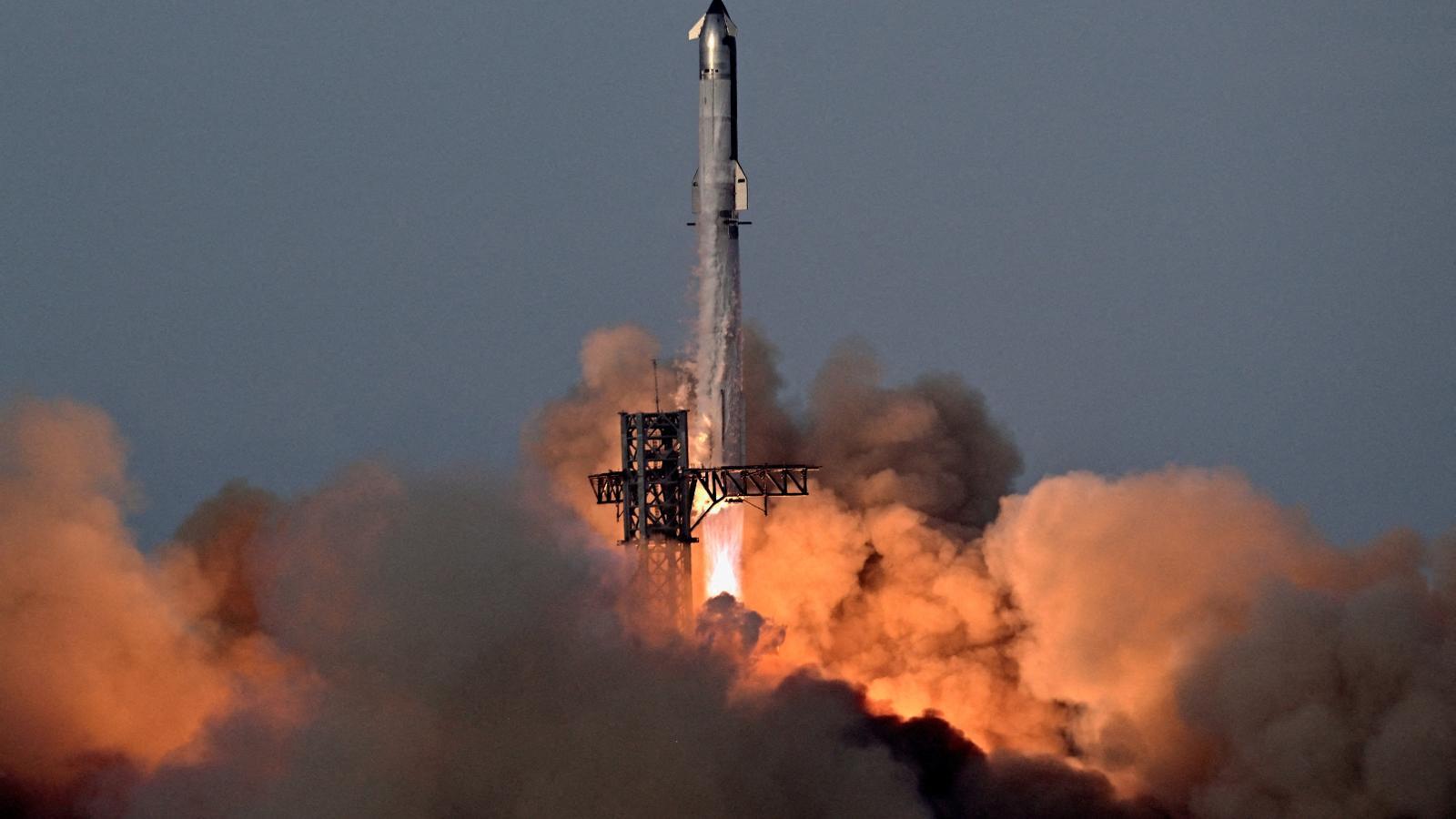Elon Musk's giant rocket successfully completes its tenth test flight
After three recent failures, Starship is back on course with the hope of returning humans to the Moon in 2027.

BarcelonaElon Musk's massive Starship has successfully completed its tenth test launch. The SpaceX rocket landed its booster, dubbed Super Heavy, softly in the Gulf of Mexico, and its upper body, the Starship, reached the Indian Ocean as planned.
The Starship has features that make it the flagship of SpaceX's project: it's not just any rocket, despite still being under development, and it's the largest and most powerful in the world—it stands 123 meters tall. Thanks to this, the Starship has become NASA's great hope for sending astronauts back to the Moon in 2027, a milestone that hasn't happened since 1972. It's also the cornerstone of Musk's grand space project: Mars tourism.
The ship, which took off this Tuesday at 6:30 p.m. in Texas – 1:30 a.m. Wednesday morning in Barcelona – from the city of Starbase, where SpaceX has its base, has returned the tests to the right track, after The last three launches ended with the loss of the ship.In an effort to turn things around, Musk's company reportedly removed a significant number of tiles from the vehicle to test the limits of vulnerable areas during re-entry into Earth's atmosphere. The launch was watched live by two million people online.
Another of the project's unique features has to do with the magnate's intention to reduce costs, one of Musk's great obsessions. The Starship aims to achieve a revolutionary milestone: being able to reuse its components. Thus, one of SpaceX's objectives is to ensure that the two parts of the rocket, the booster and the ship, can be recovered once they return to Earth. Therefore, it is vital to ensure they can land. Until now, rocket parts were lost. During this last flight, the Super Heavy booster separated from the Starship about seven minutes after takeoff and fell into the waters of the Gulf of Mexico, in the southern United States, as expected. However, it is still unclear whether it made it back in one piece.
In any case, Elon Musk has been quick to congratulate those responsible for the program. "Great job SpaceX team!!," the company's CEO wrote in a post on his social network, X, after the launch.
The successful test follows disappointing flights seven, eight, and nine. In these tests, the Starship upper stage failed earlier in the flight than in the fifth and sixth tests, which also survived re-entry and simulated a landing over the Indian Ocean. In fact, the investigation into Starship's ninth flight on May 27 determined that fuel leaks had affected the rocket's stability control, ultimately leading to its explosion.
